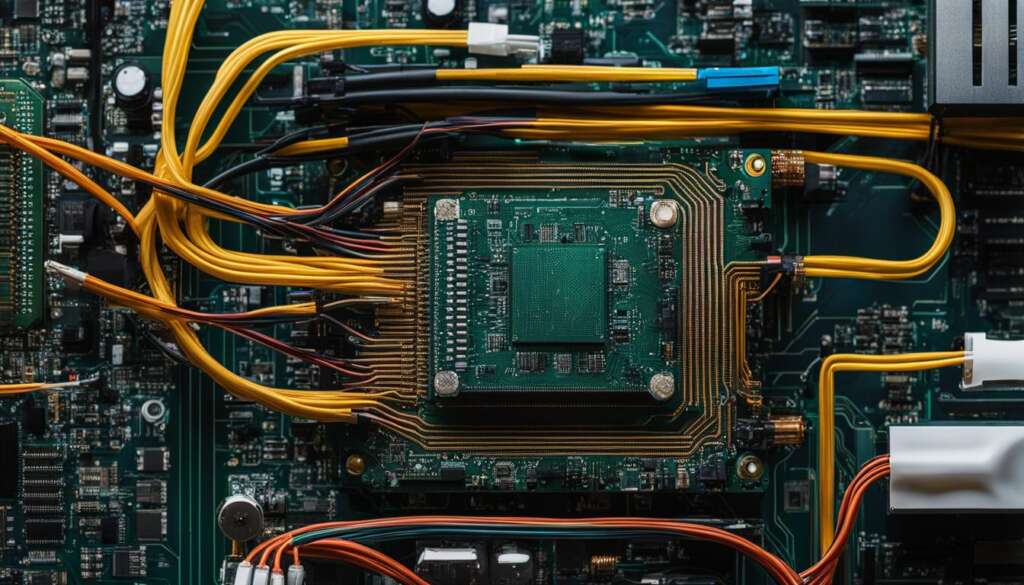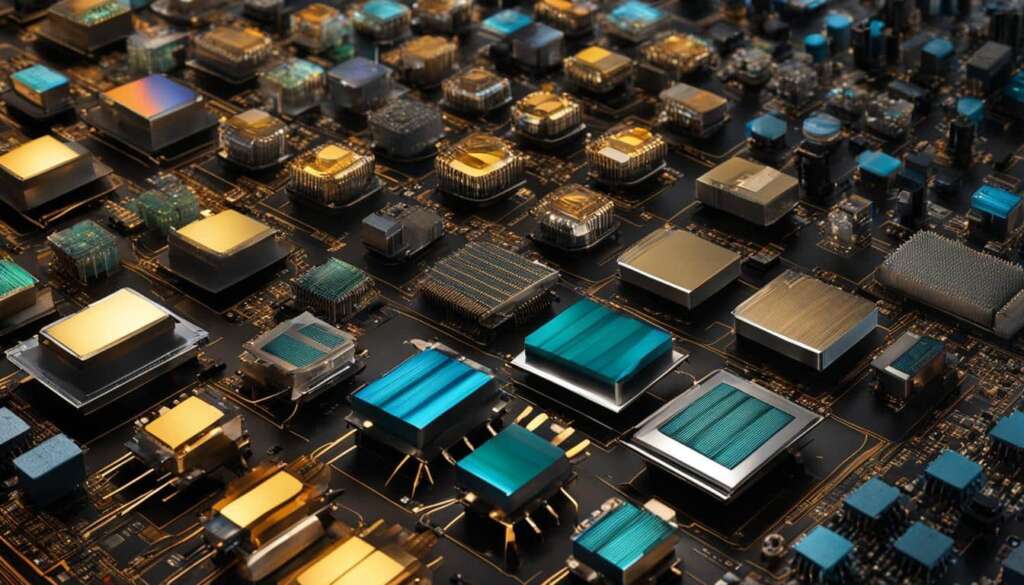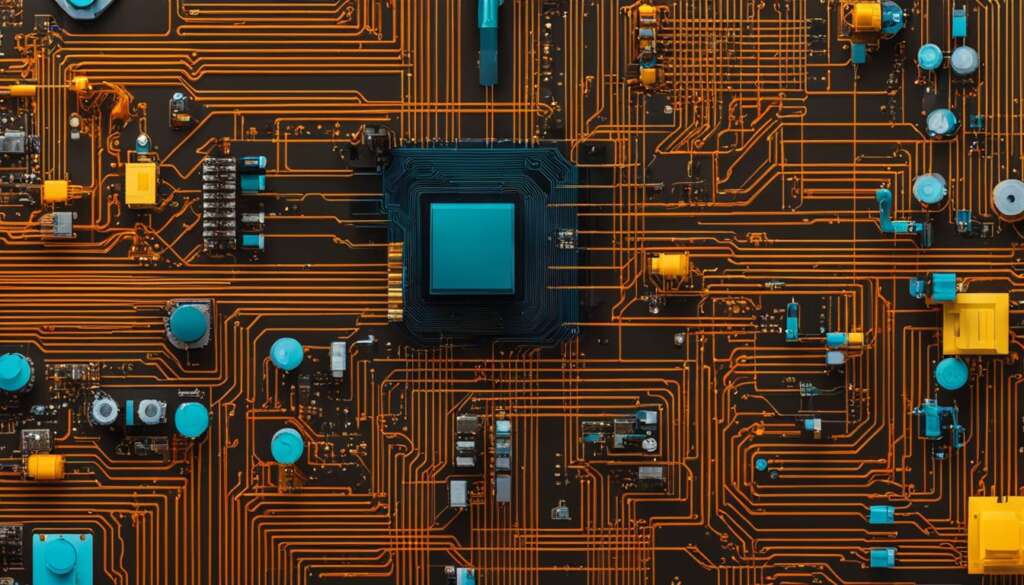Table of Contents
ARM processors have left an indelible mark on the mobile industry, propelling smartphones and tablets into the modern era. Their legacy is a testament to their remarkable history, evolving architecture, technological advancements, and unwavering support for legacy processor development.
With their inception, ARM processors revolutionized the landscape of mobile computing. Their architecture, specifically designed for low power consumption and high performance-per-watt ratio, has made them the go-to choice for manufacturers seeking cost-effective and versatile solutions.
Over the years, ARM processors have undergone a remarkable evolution, adapting to the ever-changing demands of the industry. Their unparalleled efficiency, coupled with their ability to deliver impressive speeds, has propelled them to dominate the market.
Not limited to smartphones and tablets, ARM processors have extended their reach into other product categories, such as routers, set-top boxes, smart TVs, smartwatches, and automotive infotainment systems. Their adaptability and versatility have solidified their position as industry leaders.
The legacy of ARM processors is not only defined by their technological advancements but also by the support they offer to a wide array of legacy devices. From the early days to the present, ARM has consistently maintained backward compatibility, ensuring seamless integration and continuous support for older generations of devices.
In the following sections, we will delve deeper into the rise of ARM servers, explore the multicore and multithreading capabilities of ARM processors, address the peripherals associated with ARM processors, examine compatibility challenges, and analyze the role of ARM processors in mobile devices. We will also discuss the differentiation of ARM processors in Microsoft’s Surface tablets and Microsoft’s overall strategy with these devices.
Join us on this journey as we unravel the intricacies of ARM processors and their impact on the world of mobile devices.
The Rise of ARM Servers
While ARM processors have become dominant in the mobile landscape, they have made limited progress in the server segment. Currently, Intel and AMD x86 Xeon and Opteron parts still dominate the server market. However, there is great potential for ARM servers to offer significant advantages in terms of cost-efficiency and power consumption.
ARM processors excel in power efficiency, thermals, and performance per dollar, making them an attractive option for infrastructure applications. With the growth of cloud services and changing server workloads, there is an opportunity for ARM server processors to gain traction. In fact, ARM expects to capture the majority of design wins for networking infrastructure applications.
Compared to x86 servers, ARM servers have the potential to be significantly cheaper and more power-efficient. This can lead to substantial cost savings for data centers and cloud service providers. ARM processors are known for their ability to deliver similar performance to x86 processors while consuming significantly less power. This means that ARM servers can provide excellent performance per watt, reducing both operational costs and environmental impact.
Furthermore, ARM servers offer scalability and flexibility due to their modular architecture. The small size of ARM CPU cores allows for the potential of more physical cores in ARM server processors. This, combined with the multicore technology embraced by ARM processors, ensures better efficiency and performance for various applications.
| ARM Server Advantages | X86 Server Advantages |
|---|---|
| Cost-efficiency | Compatibility with legacy applications |
| Power efficiency | Strong single-thread performance |
| Scalability and flexibility | Wide software support |
In conclusion, while ARM processors have established themselves as the go-to choice for mobile devices, their potential in the server market is still being explored. With their cost-efficiency, power efficiency, and scalability, ARM servers have the ability to provide significant advantages over traditional x86 servers. As the demand for cloud services and infrastructure applications continues to grow, ARM servers are poised to play a larger role in the future of server technology.
Multicore and Multithreading in ARM Processors
ARM processors have embraced multicore technology, with quad-core and octa-core processors becoming common in smartphones and tablets. This approach involves distributing the computational load across multiple cores, resulting in improved efficiency and performance. The smaller size of ARM CPU cores, compared to Intel’s cores, offers the potential for more physical cores in ARM server processors, enabling even greater parallel processing capabilities.
One of the key advantages of multicore processors is their ability to handle multiple tasks simultaneously, known as multithreading. This enhances overall system performance by allowing different threads of execution to be processed in parallel. ARM processors, particularly those based on the ARM Cortex architecture, are commonly used in both high-end and standard ARM processors, allowing for efficient multitasking in various applications.
“Multicore technology in ARM processors ensures better efficiency and performance for a wide range of applications.”
ARM multicore processors offer several advantages over their single-core counterparts. First and foremost, they deliver improved performance by leveraging parallel processing capabilities. With more cores available for computation, tasks can be allocated more evenly, resulting in faster execution. Additionally, multicore technology enhances power efficiency, as the workload can be distributed across multiple cores, reducing the strain on each individual core. This leads to better overall energy efficiency and longer battery life in mobile devices.
| Advantages of ARM Multicore Processors | Performance | Power Efficiency | Parallel Processing |
|---|---|---|---|
| Improved performance through parallel processing | ✓ | ✓ | |
| Enhanced power efficiency and longer battery life | ✓ | ||
| Efficient multitasking and better resource allocation | ✓ | ✓ |
The ARM Cortex Cores
The ARM Cortex architecture plays a significant role in the multicore capabilities of ARM processors. ARM Cortex cores are widely used across different product categories, providing a balance between performance and power efficiency. These cores are designed to deliver optimal performance while minimizing energy consumption, making them suitable for a range of applications in mobile devices, as well as other embedded systems.
The Cortex cores are available in various configurations, including single-core, dual-core, quad-core, and even octa-core designs. This flexibility allows device manufacturers to choose the number of cores that best suits their specific requirements, striking a balance between performance and cost. The multicore nature of these Cortex cores ensures efficient task management, enabling seamless multitasking and improved user experience.
With the continued advancement of multicore and multithreading technologies in ARM processors, we can expect even greater performance gains and power efficiency in future iterations. As the demand for processing power continues to grow, multicore processors will play a crucial role in meeting the needs of modern applications, ensuring smooth and efficient operation across various device categories.
Addressing ARM Processor Peripherals
ARM processors rely on a robust system of peripherals to enhance their functionality and connect with external devices. These peripherals play a crucial role in expanding the capabilities of ARM-based platforms, enabling them to interact with a wide range of hardware components. To facilitate this communication, ARM processors utilize the popular AMBA/AXI bus interface, which serves as the main conduit for data transfer between the processor and peripherals.
The AMBA/AXI bus interface provides a standardized protocol for communication, ensuring compatibility and interoperability between ARM processors and the peripherals they interact with. However, it’s important to note that the configuration and address space of these peripherals are determined by the chip vendor. This means that there is no universal standard for the topology of ARM processor peripherals, and chip vendors have the flexibility to design their own interfaces based on their specific requirements.
Operating systems, such as Linux, access these peripherals through their physical addresses. To effectively address and access specific peripherals, developers and system integrators rely on documentation provided by the chip vendor or board vendor. This documentation contains detailed information about the addressing scheme, register maps, and control mechanisms for each peripheral, enabling seamless integration and utilization within an ARM-based system.
By addressing ARM processor peripherals through the AMBA/AXI bus interface and leveraging the documentation provided by chip vendors, developers can harness the full potential of these peripherals and unlock a wide array of functionalities in ARM-based platforms. This flexibility and customizability are some of the key advantages that make ARM processors a popular choice in various applications, including mobile devices, embedded systems, and IoT solutions.
ARM Processors and Compatibility
When it comes to compatibility, ARM processors have certain limitations compared to Intel’s x86 architecture. ARM processors are not compatible with applications designed specifically for x86 processors. This means that software developed for desktop computers or laptops running on Intel or AMD processors may not work directly on devices powered by ARM processors. However, there have been efforts to address this compatibility issue.
One notable example is Windows RT, an operating system developed by Microsoft specifically for ARM processors. Windows RT was designed to ensure compatibility with legacy applications by making significant tweaks and adaptations. It allowed Surface RT tablets, which are powered by ARM processors, to connect to various ARM-compatible devices and newer wireless printers and peripherals. On the other hand, Surface Pro tablets, equipped with Intel processors, offer legacy app support and are more suitable for productivity tasks that require compatibility with a wide range of applications.
To sum it up, while ARM processors may not have the same level of compatibility with legacy applications as x86 processors, efforts have been made to bridge the gap. By developing specific versions of operating systems and applications for ARM processors, manufacturers have been able to provide users with devices that cater to their specific needs and offer a range of compatibility options.
The Development of Windows RT
Windows RT was specifically developed by Microsoft to be compatible with ARM processors. It required significant tweaks and adaptations to ensure compatibility with legacy applications. This allowed Surface RT tablets, running on ARM processors, to connect to various ARM-compatible devices and newer wireless printers and peripherals. On the other hand, Surface Pro tablets, with their x86 architecture, offer legacy app support and are more suitable for productivity tasks that require compatibility with a wide range of applications.
| ARM Processors | x86 Processors | |
|---|---|---|
| Compatibility with legacy applications | Requires tweaks and adaptations | Direct compatibility |
| Connectivity | ARM-compatible devices, newer wireless printers, peripherals | Wide range of devices and peripherals |
| Suitable for | Different mobile applications | Productivity tasks, legacy applications |
ARM Processors in Mobile Devices
ARM processors have revolutionized the world of mobile devices, becoming the go-to choice for smartphones, tablets, portable game consoles, netbooks, and MP3 players. Their small size, low cost, and low power usage make them ideal for these mobile devices. One of the key advantages of ARM processors is their efficiency, which translates to longer battery life for mobile devices. This means that users can enjoy using their smartphones and tablets for extended periods without worrying about running out of power.
In addition to their efficiency, ARM processors also offer reasonable speed for mobile computing tasks. While they may not match the speed of Intel processors, they provide sufficient performance for most mobile applications, including web browsing, social media, video streaming, and gaming. This makes them a reliable choice for users who prioritize portability and battery life over raw processing power.
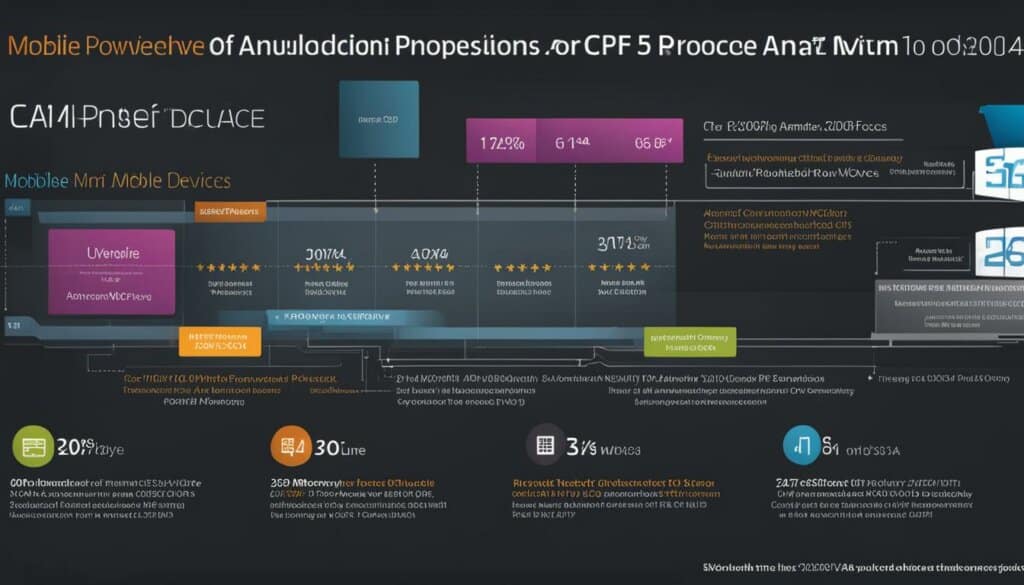
ARM processors have proven their capabilities in various mobile devices, delivering reliable performance and power efficiency. Their dominance in the mobile device industry is a testament to their success. Whether it’s a smartphone or a tablet, ARM processors provide the foundation for a smooth and seamless user experience, making them a popular choice among consumers.
Table: Comparison of ARM Processors in Smartphones and Tablets
| Device | Processor | Efficiency | Speed |
|---|---|---|---|
| Smartphone | ARM Cortex-A77 | High | Fast |
| Tablet | ARM Cortex-A76 | High | Fast |
| Smartphone | ARM Cortex-A55 | Medium | Moderate |
| Tablet | ARM Cortex-A53 | Medium | Moderate |
| Smartphone | ARM Cortex-A7 | Low | Basic |
| Tablet | ARM Cortex-A5 | Low | Basic |
The table above provides a comparison of ARM processors used in smartphones and tablets. It showcases the different levels of efficiency and speed offered by various ARM Cortex cores. Users can choose the processor that best suits their needs based on the intended use of their mobile device. Whether it’s a high-performance smartphone or a budget-friendly tablet, ARM processors provide a range of options to cater to different user requirements.
ARM Processors in Surface Tablets
Microsoft’s Surface tablets offer a unique combination of hardware and software, allowing users to choose between ARM and Intel processors. The decision between ARM and Intel processors in Surface tablets depends on specific user needs and preferences. Let’s explore the differences and features of ARM processors in Surface tablets and compare them with their Intel counterparts.
Surface RT vs Surface Pro
The Surface RT tablets are equipped with ARM processors, providing users with long battery life and a thinner design. These tablets are compatible with Windows RT applications, offering a streamlined and secure user experience. On the other hand, the Surface Pro tablets feature Intel processors, offering laptop-level power and compatibility with legacy applications. These tablets are more suitable for productivity tasks and provide connectivity to existing office equipment.
Table: Comparing ARM and Intel Processors in Surface Tablets
| Feature | ARM Processors (Surface RT) | Intel Processors (Surface Pro) |
|---|---|---|
| Battery Life | Longer battery life with efficient power consumption | Shorter battery life compared to ARM processors |
| Performance | Optimized for mobile applications | Laptop-level power for productivity tasks |
| Compatibility | Windows RT applications | Legacy applications and existing office equipment |
“The dual offering of ARM and Intel processors in Surface tablets caters to different user needs and reflects the trend of using different hardware for different content consumption.” – Microsoft
By offering both ARM and Intel options, Microsoft provides a range of choices to cater to various user requirements. Whether users prioritize portability and extended battery life or require the power and compatibility of legacy applications, Surface tablets have the versatility to meet their needs.
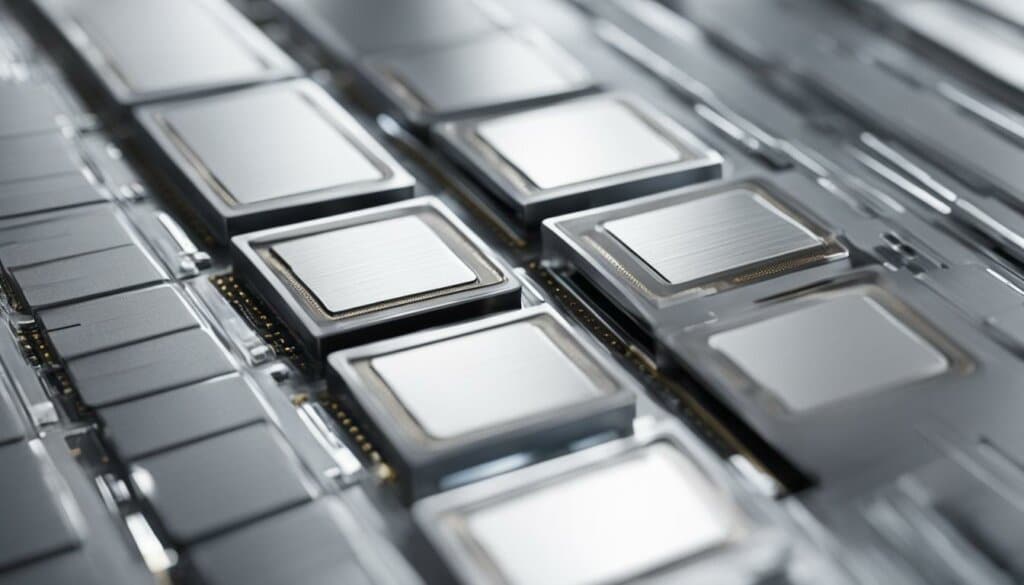
Microsoft’s Strategy with Surface Tablets
Microsoft’s Surface tablet strategy is strategically crafted to target specific market segments and provide a range of options for consumers. By offering both ARM and Intel versions, Microsoft aims to compete with ARM-based mobile devices like the iPad while also offering productivity features to rival ultrabooks and laptops. This unique combination of hardware and software offers both convenience and power to users, making the Surface tablets stand out in the market.
Surface tablets come in two versions: Surface RT, running on ARM processors, and Surface Pro, powered by Intel processors. The Surface RT tablets are designed for users who prioritize long battery life and a thinner design. They are compatible with Windows RT applications and offer seamless connectivity with various ARM-compatible devices and newer wireless printers and peripherals.
On the other hand, Surface Pro tablets provide laptop-level power and offer legacy app support, making them more suitable for productivity tasks. With their Intel processors, they can easily connect to existing office equipment, making them ideal for professionals who require the flexibility of a traditional laptop. This differentiation between the ARM and Intel versions caters to different user needs and reflects the trend of using different hardware for different content consumption.
Overall, Microsoft’s Surface tablet strategy demonstrates their commitment to providing a versatile computing experience for users. By offering a range of options, they address the needs of various market segments and provide a compelling alternative for both consumer and professional users.

Table: Surface Tablet Differentiation
| Surface RT (ARM) | Surface Pro (Intel) | |
|---|---|---|
| Processor | ARM | Intel |
| Battery Life | Longer | Shorter |
| Design | Thinner | Slightly thicker |
| Compatibility | Windows RT applications | Legacy app support |
| Connectivity | ARM-compatible devices, wireless printers, peripherals | Existing office equipment |
Conclusion
ARM processors have revolutionised the mobile device industry with their efficiency, cost-effectiveness, and performance. Their impact on the market is undeniable, as they have emerged as the dominant choice for smartphones and tablets. The success of companies like Qualcomm and Apple can be attributed to the custom ARM cores that power their devices. Even in other product categories such as routers, set-top boxes, smart TVs, smartwatches, and automotive infotainment systems, ARM processors have made their mark.
While ARM processors have made limited progress in the server segment, there is potential for them to be significantly cheaper and more power-efficient compared to Intel and AMD x86 servers. Their power efficiency, thermals, and performance per pound make them suitable for infrastructure applications. The growth of cloud services and changing server workloads provide an opportunity for ARM server processors to shine. ARM is optimistic about capturing the majority of design wins for networking infrastructure applications.
ARM processors have embraced multicore technology, with quad-core and octa-core processors becoming common in smartphones and tablets. This approach improves efficiency and performance for various applications. ARM Cortex cores, used in both high-end and standard ARM processors, enhance the overall experience by ensuring better efficiency and performance.
Looking towards the future, the evolution and adaptation of ARM processors will continue to meet changing technology needs. Their legacy in the mobile device industry is secure, and they are poised to make further strides in other domains. As they tackle compatibility challenges with x86 architectures, developers are finding ways to create specific versions of operating systems and applications for ARM processors. With their efficiency, cost-effectiveness, and adaptability, the future of ARM processors looks promising.
FAQ
What industries have ARM processors dominated?
ARM processors have dominated the smartphone and tablet landscape, as well as other industries such as routers, set-top boxes, smart TVs, smartwatches, and automotive infotainment systems.
Have ARM processors made progress in the server segment?
While Intel and AMD x86 Xeon and Opteron parts still dominate the server market, there is potential for ARM servers to be significantly cheaper and more power-efficient.
How many cores do ARM processors typically have?
ARM processors have embraced multicore technology, with quad-core and octa-core processors becoming common in smartphones and tablets.
How do ARM processors connect with peripherals?
ARM processors use the AMBA/AXI bus interface to connect with peripherals. The configuration and address space of the peripherals are determined by the chip vendor.
Are ARM processors compatible with applications designed for Intel’s x86 architecture?
No, ARM processors are not compatible with applications designed for Intel’s x86 architecture. However, specific versions of operating systems and applications have been developed for ARM processors to ensure compatibility.
Where are ARM processors commonly used?
ARM processors have become the standard in smartphones, tablets, portable game consoles, netbooks, and MP3 players.
What differentiates ARM processors in Surface tablets?
Surface RT tablets, running on ARM processors, offer long battery life, thinner design, and compatibility with Windows RT applications. Surface Pro tablets, with Intel processors, provide laptop-level power, legacy app support, and connectivity to existing office equipment.
What strategy does Microsoft have with Surface tablets?
Microsoft’s strategy with Surface tablets is to compete with ARM-based mobile devices while offering productivity features to rival ultrabooks and laptops.
How have ARM processors revolutionized the mobile device industry?
ARM processors have revolutionized the mobile device industry with their efficiency, cost-effectiveness, and performance, making them the dominant choice for smartphones and tablets.
What does the future hold for ARM processors?
The future of ARM processors looks promising as they continue to evolve and adapt to changing technology needs.

